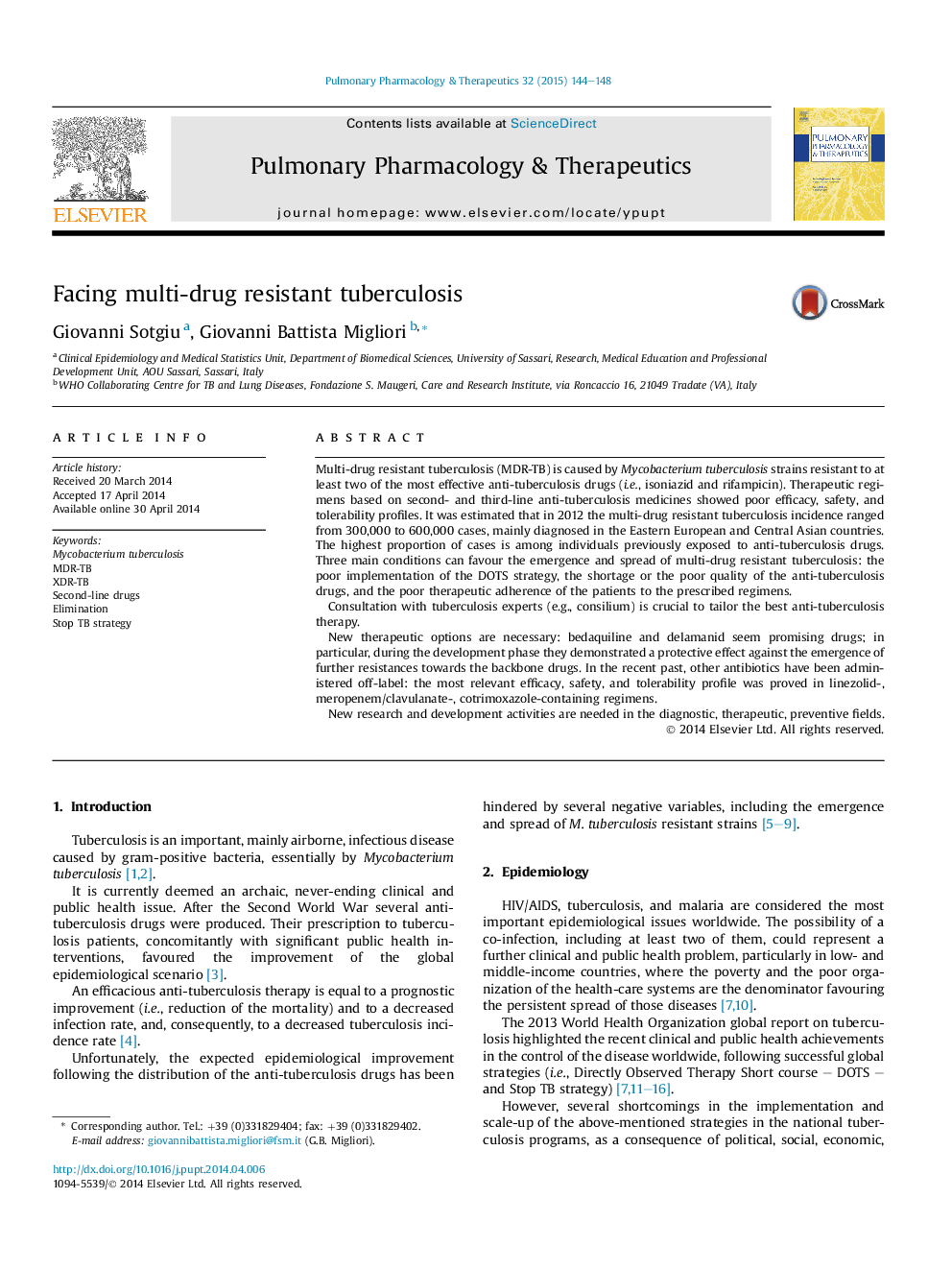| Article ID | Journal | Published Year | Pages | File Type |
|---|---|---|---|---|
| 5845626 | Pulmonary Pharmacology & Therapeutics | 2015 | 5 Pages |
Multi-drug resistant tuberculosis (MDR-TB) is caused by Mycobacterium tuberculosis strains resistant to at least two of the most effective anti-tuberculosis drugs (i.e., isoniazid and rifampicin). Therapeutic regimens based on second- and third-line anti-tuberculosis medicines showed poor efficacy, safety, and tolerability profiles. It was estimated that in 2012 the multi-drug resistant tuberculosis incidence ranged from 300,000 to 600,000 cases, mainly diagnosed in the Eastern European and Central Asian countries. The highest proportion of cases is among individuals previously exposed to anti-tuberculosis drugs. Three main conditions can favour the emergence and spread of multi-drug resistant tuberculosis: the poor implementation of the DOTS strategy, the shortage or the poor quality of the anti-tuberculosis drugs, and the poor therapeutic adherence of the patients to the prescribed regimens.Consultation with tuberculosis experts (e.g., consilium) is crucial to tailor the best anti-tuberculosis therapy.New therapeutic options are necessary: bedaquiline and delamanid seem promising drugs; in particular, during the development phase they demonstrated a protective effect against the emergence of further resistances towards the backbone drugs. In the recent past, other antibiotics have been administered off-label: the most relevant efficacy, safety, and tolerability profile was proved in linezolid-, meropenem/clavulanate-, cotrimoxazole-containing regimens.New research and development activities are needed in the diagnostic, therapeutic, preventive fields.
